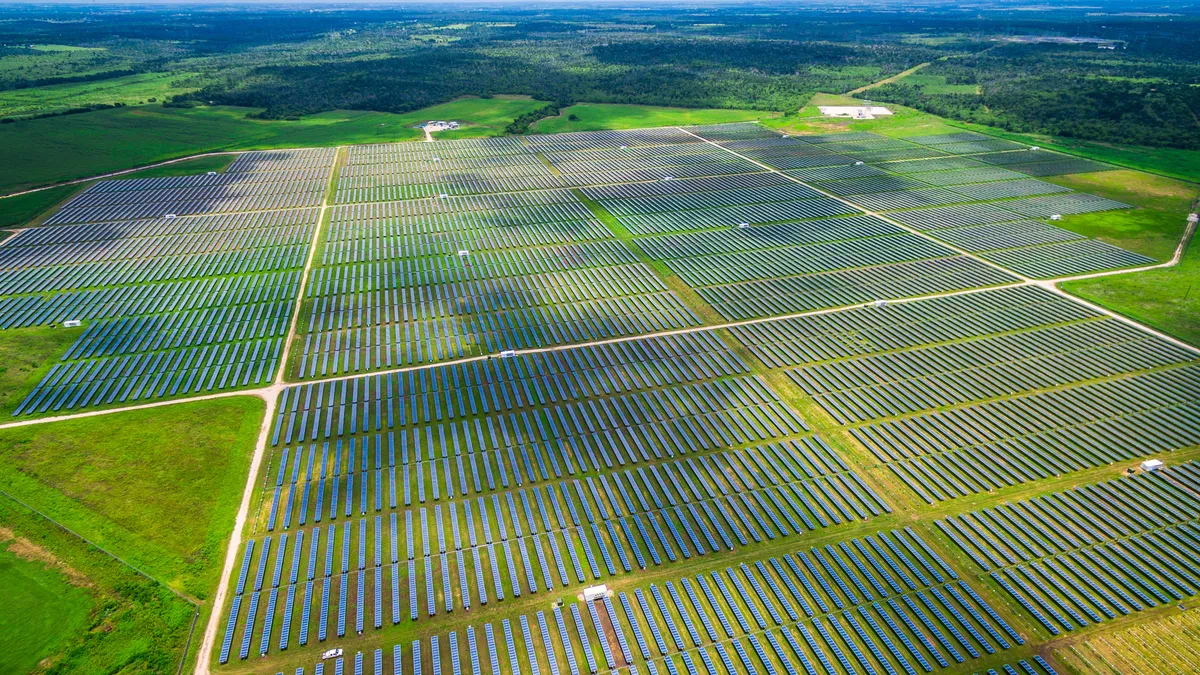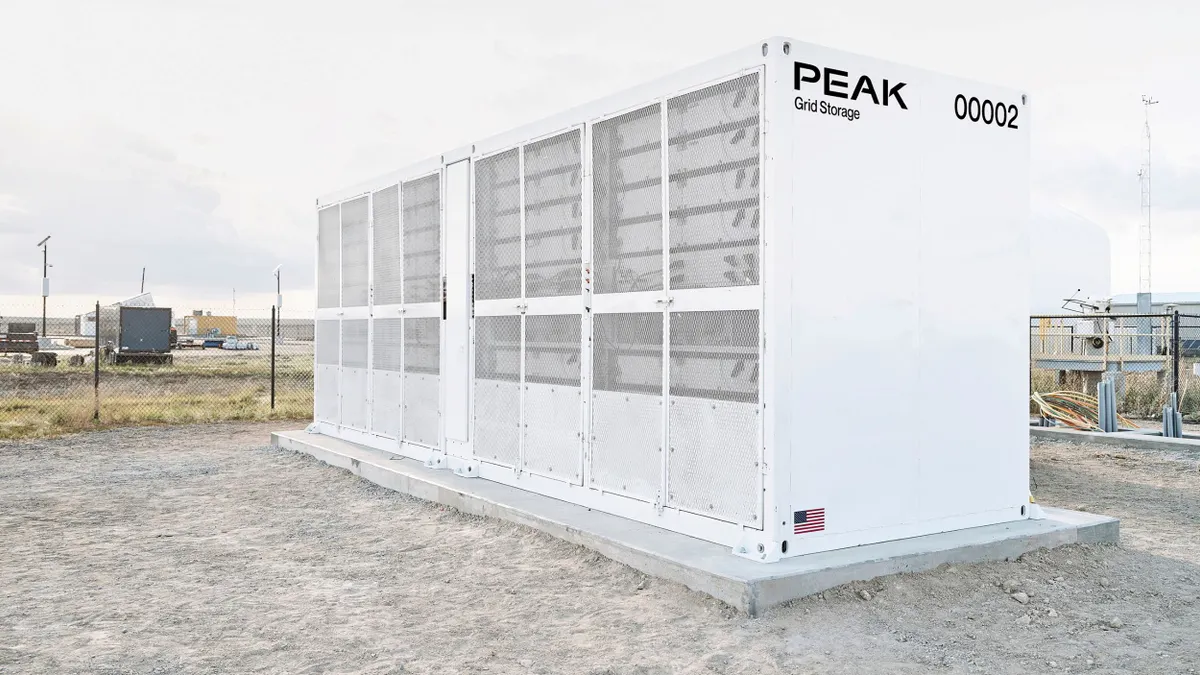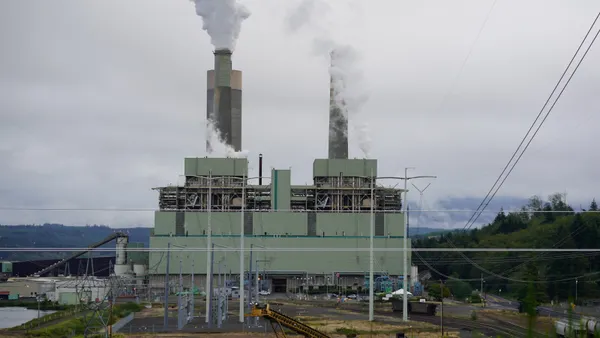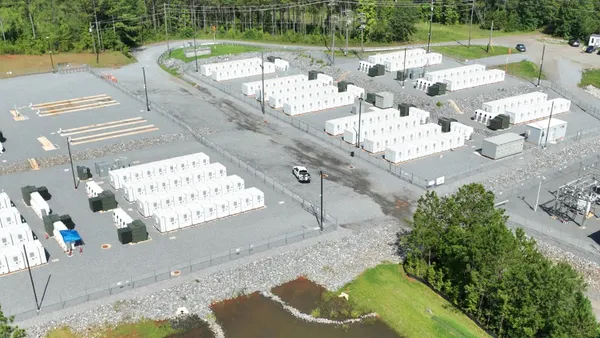Dive Brief:
- Restrictions on wind and solar development in Texas could increase wholesale power prices by 14% over the next 10 years and cause capacity shortfalls resulting in up to 3.1 GW of load shed in an extreme weather event, Aurora Energy Research said in an April 16 report prepared for the Texas Association of Business.
- In a “fully restricted renewables” scenario, where no further wind and solar development occurs in Texas once today’s late-stage projects are deployed, a typical 100-MW industrial customer would pay $6.3 million more for power each year by 2035, Aurora said. The typical household’s electricity costs would increase $225 per year, or about 10%.
- The report highlights the importance of the Texas renewables industry in meeting expected load growth this decade while keeping prices in check and that “renewables can make the system more reliable as opposed to less reliable … [which] tends to be overshadowed” in discussions of the role they play on the grid, Aurora’s Head of US Central Olivier Beaufils said in an interview.
Dive Insight:
The biennial Texas legislature is considering several bills this session that would benefit new natural gas and other firm generation resources at the expense of renewables.
In the past few weeks, the state Senate passed one bill imposing new fees and regulatory requirements on wind and solar projects and another requiring new renewables to be matched megawatt-for-megawatt with new “dispatchable” resources other than batteries. A third bill under consideration, but not yet passed, would retroactively require firm backup generation at wind and solar facilities.
The 2025 bills build on previous legislative efforts to blunt renewables’ rapid advance and incentivize dispatchable generation in the Electric Reliability Council of Texas’s territory. Though several proposals similar to those under consideration this year failed to advance out of the 2023 session, legislators did authorize the now-beleaguered Texas Energy Fund, which has seen 35% of its proposed dispatchable capacity canceled or withdrawn amid escalating project costs and supply chain challenges.
Energy issues moved to the forefront of the Texas policy conversation following the near-collapse of the ERCOT grid during Winter Storm Uri, a prolonged freeze that killed hundreds of Texans and left millions without power for days in February 2021.
That has created an opening for “interests and people in Texas that maybe are less convinced of the free-market nature of ERCOT and would prefer to steer the state into picking specific technologies,” Beaufils said. “They are saying, ‘OK, maybe this whole free-market thing hasn’t been going the way we want it to go, so let’s push the market.’”
The Aurora team was not surprised to find that curtailing deployment of lower-cost wind and solar resources would increase power prices, Beaufils said. Aurora’s analysis showed lower average levelized, unsubsidized costs for both wind and solar-plus-battery projects than for any non-battery “dispatchable” alternative, including combined-cycle gas.
More “interesting,” Beaufils said, was the finding that reliability would also decline in Aurora’s restricted-renewables scenarios.
Aurora compared a business-as-usual “central scenario,” where current renewables projects in development deploy and market signals dictate future deployments, against two restricted scenarios. In the “limited renewables” scenario, renewables projects in late-stage development reach deployment and future projects deploy at 50% of the central scenario pace. The “fully restricted renewables” scenario sees no further renewables deployment after current late-stage development projects come online.
By 2035, an extreme weather event could prompt respective load sheds of 1.8 GW/6.7 GWh under the limited scenario and 3.1 GW/12.7 GWh under the fully restricted scenario, causing as much as $450 million in direct economic impacts, Aurora found.
Key to Aurora’s analysis — and underscored by the Texas Energy Fund’s troubles — is a persistent shortfall in gas turbine manufacturing capacity, with major turbine OEMs like GE Vernova, Siemens and Mitsubishi Power quoting deliveries in 2029 and beyond, the report said.
“You can’t add an infinite amount of thermal generation to the system over the next five years,” Beaufils said.
While Texas could add about 17 GW of thermal capacity through 2035 under both restricted-renewables scenarios, supply constraints could prevent up to 6.5 GW in further additions over the period, Aurora found.
Individual industrial customers might deploy behind-the-meter backup power or consider deploying microgrids to reduce grid dependence, but running on backup power is an expensive “last resort” and well-designed microgrids can take years to develop, Beaufils said. So the upshot of capacity shortfalls and structurally higher power prices in a restricted-renewables scenario is a state that’s less attractive to invest in, he said.
“The last thing an industrial consumer would want is very high prices because there’s less capacity on the system,” Beaufils said.














